Marijuana edibles are cannabis-infused foods or drinks, offering a discreet and flavorful way to consume THC. Popular forms include gummies, chocolates, and baked goods, providing prolonged effects compared to smoking.
What Are Marijuana Edibles?
Marijuana edibles are food or drink products infused with cannabis, designed for oral consumption. They contain cannabinoids like THC or CBD, which interact with the body’s endocannabinoid system. Edibles come in various forms, such as gummies, chocolates, baked goods, and beverages, offering a discreet and flavorful way to consume cannabis. Unlike smoking, edibles provide a longer-lasting effect due to slower digestion and metabolism. They are popular for their potency, convenience, and ability to avoid respiratory irritation associated with inhalation. Edibles are used both recreationally and medicinally, making them a versatile option for cannabis enthusiasts and patients seeking relief from symptoms like pain or anxiety.
Popular Types of Marijuana Edibles
Marijuana edibles come in a wide variety of forms, catering to diverse preferences and tastes. Gummies, chocolates, and baked goods are among the most popular due to their discretion and flavor. Candies, lollipops, and fudge are also favored for their sweet appeal. Beverages, such as infused teas and sodas, offer a drinkable option. Additionally, snacks like brownies, cookies, and granola bars provide a convenient way to consume cannabis. These edibles are often chosen for their ease of use, potent effects, and the ability to mask the cannabis taste. Their popularity stems from their versatility, making them accessible for both recreational and medicinal users seeking a smoking-free experience.
Benefits of Marijuana Edibles Over Smoking
Marijuana edibles offer several advantages over smoking, making them a preferred choice for many users. Edibles eliminate the need to inhale smoke, reducing potential lung damage and health risks associated with combustion. They provide a longer-lasting effect due to slower THC absorption through the digestive system. Edibles are also more discreet, as they resemble regular food items, making them easier to consume in public. Additionally, edibles allow for precise dosing, reducing the risk of overconsumption. They are a convenient option for those who cannot or prefer not to smoke, offering a smoke-free and odor-free experience. This method is particularly beneficial for individuals with respiratory issues or those seeking a more controlled cannabis experience.
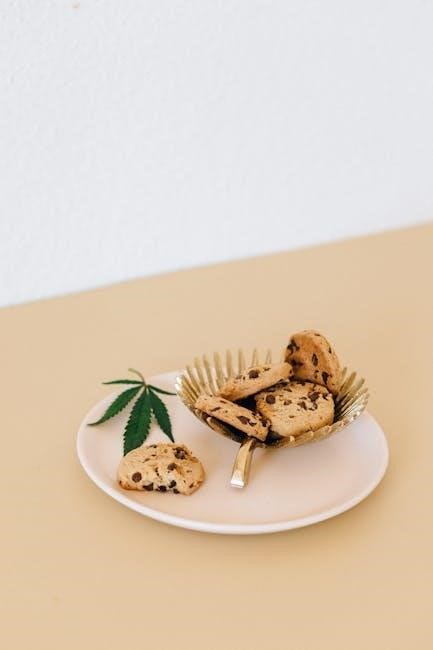
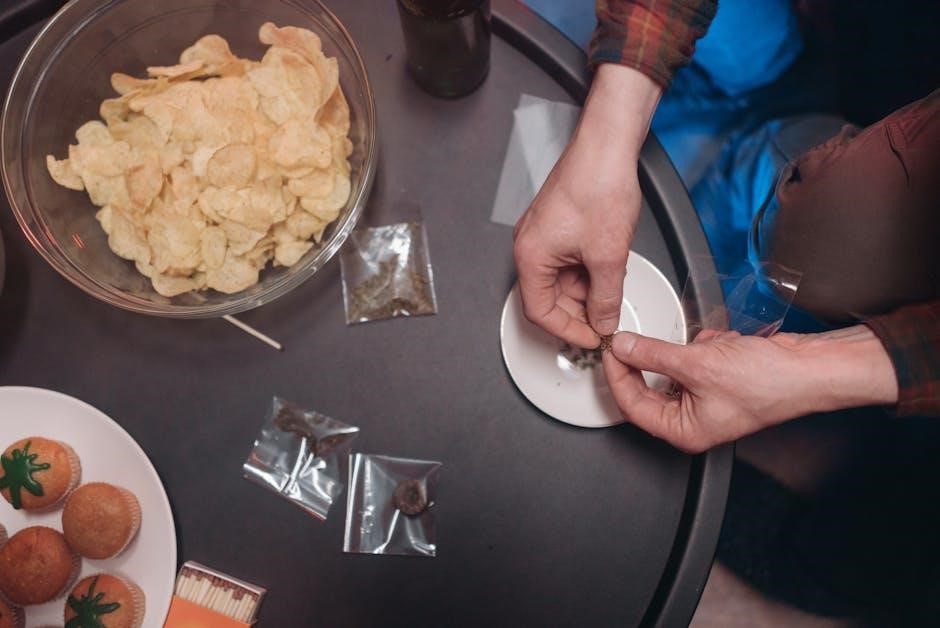
Necessary Ingredients and Tools
Essential ingredients include cannabis, oils, and flavorings, while tools like blenders, molds, and precise measuring devices ensure accurate infusion and consistent edible production.
Cannabis for Edibles
When making marijuana edibles, choosing the right cannabis is crucial. High-quality flower or trim with desired THC levels ensures potency. Decarboxylation, a process of heating cannabis to activate THC, is essential for effectiveness. Edibles work better than smoking for some, offering prolonged relief. Lab-tested cannabis guarantees consistent potency and safety. Proper storage and handling prevent degradation. For beginners, low-THC strains are recommended to avoid overwhelming effects. Always use cannabis legally sourced and suitable for edibles to ensure a safe and enjoyable experience.
Essential Oils and Flavorings
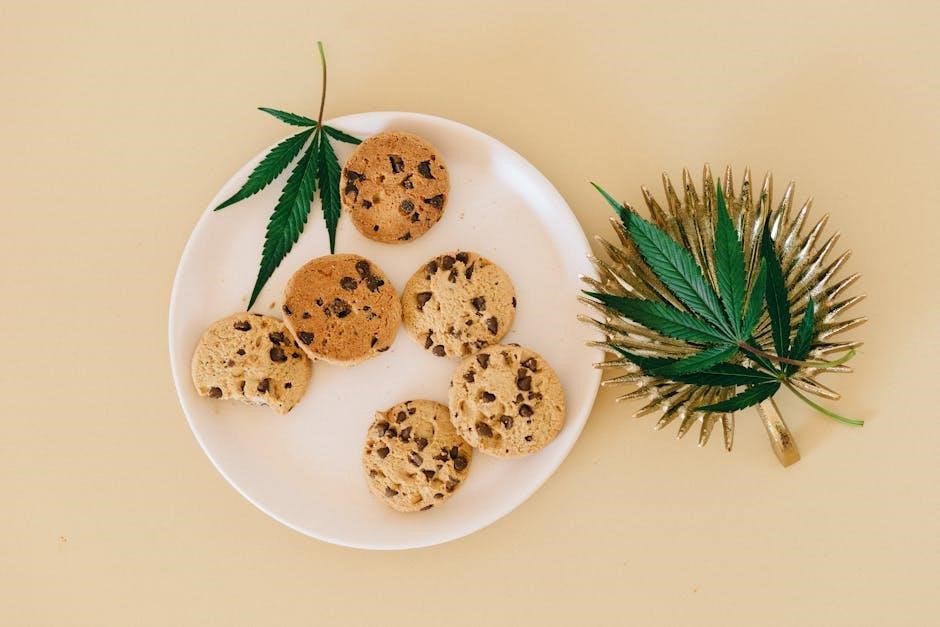
Essential oils and flavorings play a key role in enhancing the taste of marijuana edibles. They help mask the earthy flavor of cannabis, making edibles more enjoyable. Popular choices include peppermint, vanilla, and citrus oils, which can elevate both sweet and savory dishes. Natural flavorings like fruit extracts or cocoa powder are also widely used. When selecting oils, opt for high-quality, food-grade products to ensure the best results. Properly balancing flavors is crucial, as overpowering cannabis taste can deter consumption. These additions not only improve palatability but also allow for creativity in crafting unique edible recipes. Experimenting with different combinations can lead to delicious and appealing cannabis-infused treats.
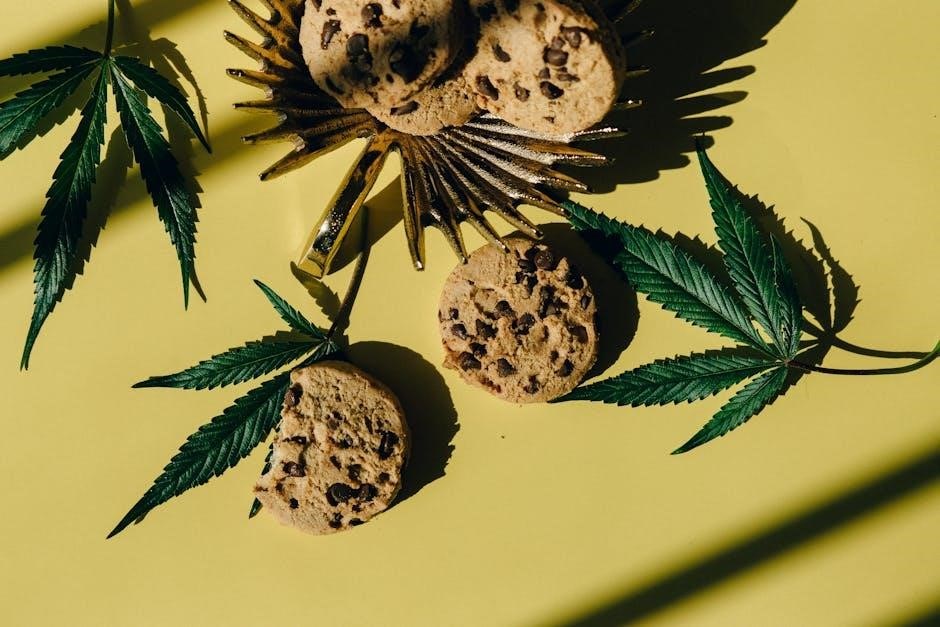
Required Kitchen Tools and Equipment
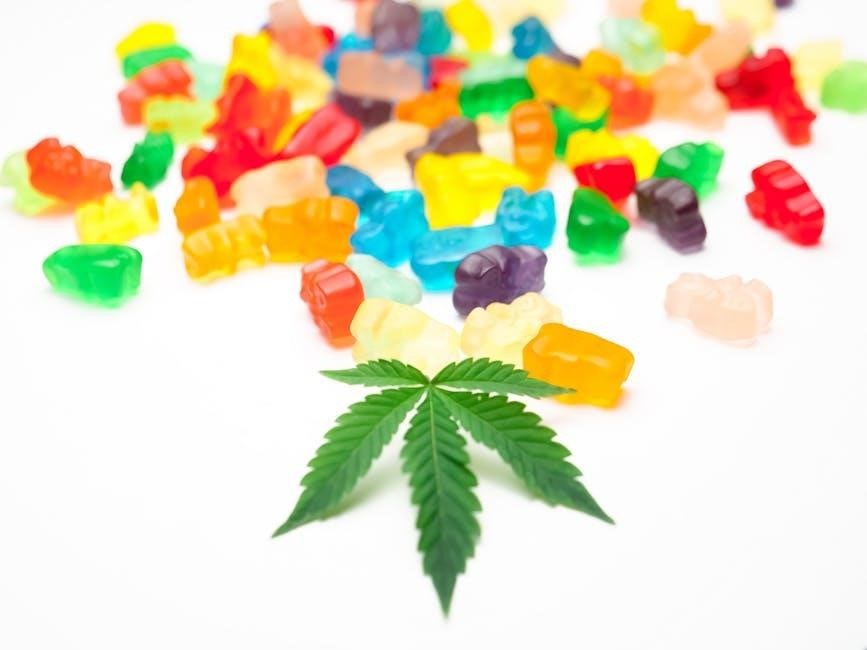
To make marijuana edibles, you’ll need specific kitchen tools and equipment. A double boiler or saucepan is essential for infusing cannabis into oils or butter. Measuring tools like a digital scale and measuring cups ensure accurate dosing. Mixing bowls, silicone spatulas, and baking trays are necessary for preparation and cooking. A food processor or blender can help incorporate cannabis into recipes seamlessly. Storage containers are crucial for keeping edibles fresh and properly dosed. Other handy items include parchment paper, muffin tins, and a thermometer for precise temperature control during infusion. Having these tools on hand will streamline the edible-making process and help achieve consistent results.

Step-by-Step Process of Making Edibles
Start by infusing cannabis into oil or butter, then prepare your recipe. Mix ingredients, cook or bake, and dose accurately. Store properly for safety and freshness.
Preparation Steps Before Cooking
Decarboxylate cannabis to activate THC, ensuring potency. Grind buds finely and heat at 220-245°F for 45 minutes. Measure THC content accurately using a calculator. Infuse cannabis into oil or butter, mixing thoroughly. Ensure flavorings complement the dish. Store leftovers properly to maintain freshness and safety. Always label edibles clearly to avoid accidental consumption. Plan dosage carefully, starting low for beginners. Use high-quality ingredients for best results. Keep tools and workspace clean to prevent contamination. Double-check measurements to avoid over-potency. Educate yourself on local laws and safety guidelines before proceeding.
Infusion Methods for Cannabis
Cannabis infusion involves dissolving cannabinoids into a base ingredient like oil or butter. Heat and time help bind THC to fats. Use a double boiler to avoid burning. For oils, simmer 2-3 hours; for butter, 1-2 hours. Strain mixture through cheesecloth to remove plant material. Alternative methods include using a slow cooker or professional infusers. Ensure even distribution for consistent potency. Choose strain-specific cannabis for desired effects. Maintain low heat to preserve terpenes and cannabinoids. Proper infusion ensures edibles are potent and flavorful. Store infused ingredients in airtight containers. Always test potency before cooking to adjust recipes accurately.
Cooking and Baking with Cannabis
Cooking and baking with cannabis require precise measurement and technique. Start with cannabis-infused butter or oil, ensuring even distribution of THC. Substitute infused ingredients into favorite recipes for consistent results. Begin with simple dishes like brownies or cookies, gradually experimenting with complex recipes. Use a digital scale for accurate dosing to avoid overpowering edibles. Bake at low temperatures (325°F) to preserve cannabinoids and prevent burning. Allow edibles to cool before serving to enhance flavor. Store leftovers in airtight containers to maintain freshness. Always label dishes with THC content for safe consumption. Practice moderation and patience, as effects may take 1-2 hours to manifest. Enjoy experimenting with creative, delicious, and potent cannabis creations!
Safety and Dosage Guidelines
Always start with low THC doses (2.5-5mg) and wait 60-90 minutes for effects. Avoid mixing edibles with alcohol or other substances. Label edibles clearly for safety.
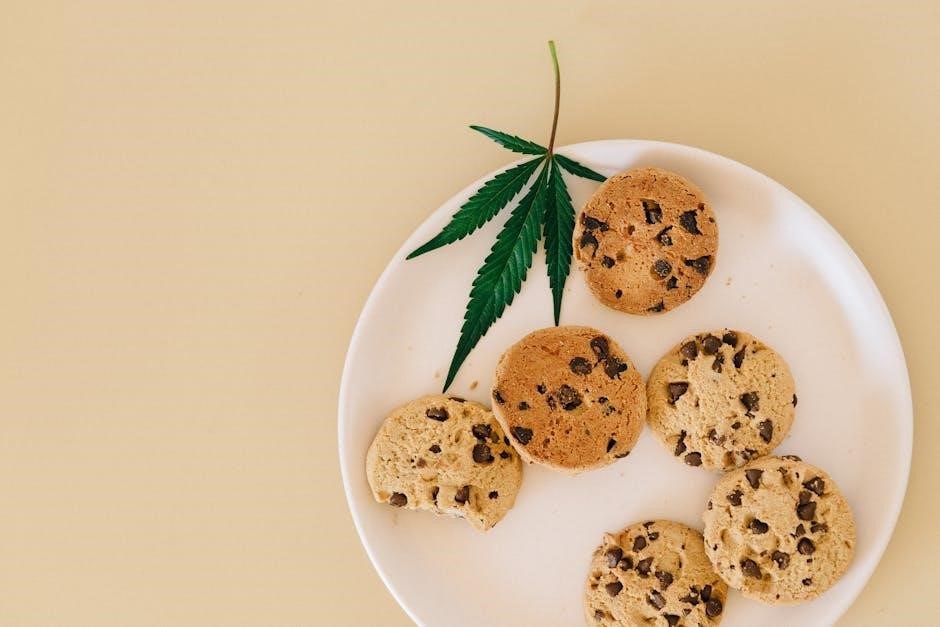
Understanding THC Dosage
Understanding THC dosage is crucial for a safe and enjoyable edible experience. THC potency varies widely, so start with a low dose (2.5-5mg) and wait 60-90 minutes to feel effects. Factors like metabolism, tolerance, and individual sensitivity influence how THC affects you. Always check the product label for accurate potency information. Overconsumption can lead to anxiety or discomfort, so dose cautiously. For beginners, consider microdosing (1-2.5mg) to gauge sensitivity. Keep edibles away from children and pets, and store them securely. If unsure, consult a medical professional or use a dosage calculator to ensure safe consumption. Remember, edibles can be potent, so patience is key.
Safe Consumption Tips for Beginners

When trying marijuana edibles for the first time, prioritize caution and patience. Start with a low THC dose (2.5-5mg) and wait 60-90 minutes to gauge effects. Avoid mixing edibles with alcohol or other substances, as this can amplify unintended reactions. Always consume in a comfortable, familiar environment and have a trusted person nearby. Keep a glass of water handy to stay hydrated, and have snacks available to manage any hunger or anxiety. Never exceed the recommended dose, and avoid driving or operating machinery while under the influence. If unsure about potency or reactions, consult a medical professional. Remember, edibles can be unpredictable, so moderation and awareness are key for a safe experience.
How to Store Marijuana Edibles Properly
Proper storage is essential to maintain the potency, flavor, and safety of marijuana edibles. Store them in a cool, dark place, such as a cupboard or drawer, away from direct sunlight and moisture. Use airtight containers to prevent exposure to air, which can degrade THC and cause staleness. Label containers clearly with contents and dosage to avoid accidental ingestion. For perishable edibles like baked goods, refrigerate or freeze to extend shelf life. Keep edibles out of reach of children and pets, using childproof containers if necessary. Avoid storing near strong-smelling foods to prevent odor transfer. Always check local regulations for specific storage requirements. Proper storage ensures edibles remain fresh, potent, and safe for consumption.
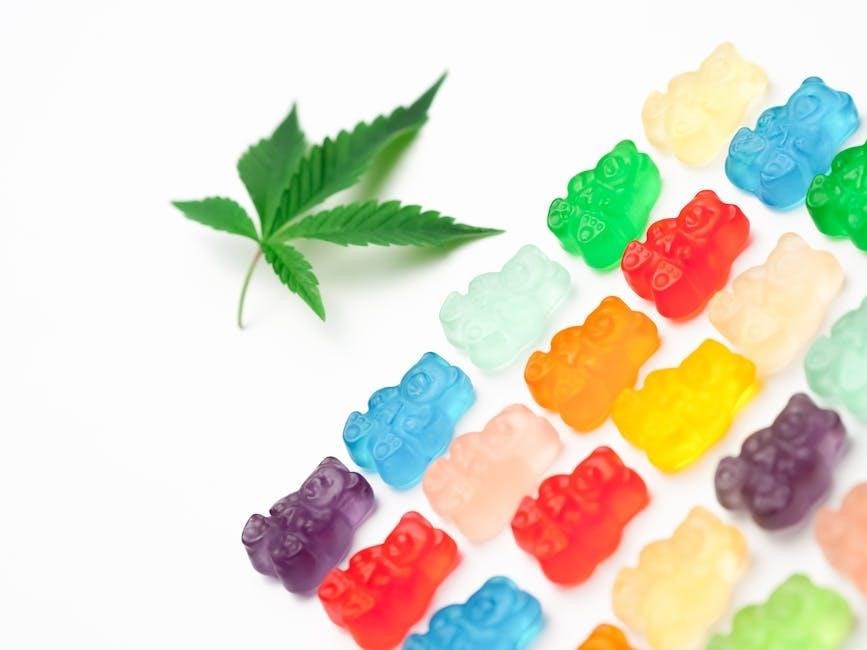
Legal and Health Considerations
Marijuana edibles are subject to varying legal regulations depending on region. Ensure compliance with local laws and consult healthcare professionals for medical advice to avoid health risks.
Legal Regulations Surrounding Edibles
Marijuana edibles are subject to strict legal regulations that vary by region. In many areas, edibles are legal for medical or recreational use, but their production and sale are heavily regulated. THC content limits, packaging requirements, and labeling standards are often enforced to ensure consumer safety. It’s crucial to consult local laws and regulations before making or consuming edibles. Additionally, age restrictions apply, and unauthorized distribution can lead to legal penalties. Always verify the legality of cannabis use and edible production in your jurisdiction to avoid legal consequences. Compliance with regional laws is essential for safe and responsible edible creation and consumption.
Health Risks and Precautions
While marijuana edibles can offer therapeutic benefits, they also pose health risks, especially if consumed irresponsibly. Overconsumption of THC can lead to anxiety, paranoia, or nausea. Edibles affect individuals differently, and their delayed onset can result in accidental overconsumption. Start with low doses and wait for effects before consuming more. Chronic use may lead to tolerance or dependency. Edibles are not recommended for individuals under 18, as they can impact brain development. Pregnant women and those with mental health conditions should avoid THC. Always store edibles safely to prevent accidental ingestion by children or pets. Consulting a healthcare professional before using edibles is advisable, especially for those with pre-existing medical conditions.
Medical Benefits of Cannabis Edibles
Cannabis edibles offer numerous medical benefits, making them a popular choice for patients seeking relief from various conditions. They provide prolonged relief from chronic pain, inflammation, and muscle spasms due to the slower digestion of THC. Edibles are effective in reducing nausea and vomiting, particularly for chemotherapy patients. They also help alleviate symptoms of epilepsy, with CBD-rich edibles showing promise in seizure reduction. Additionally, edibles can aid in managing anxiety, stress, and insomnia when consumed in appropriate doses. Their discrete nature makes them a convenient option for patients who prefer avoiding smoke. However, consulting a healthcare professional is crucial to determine the right dosage and avoid potential side effects. Edibles provide a versatile and therapeutic alternative for many medical conditions. Always prioritize quality and safety when using cannabis for medicinal purposes.
Start with low doses, use high-quality cannabis, and experiment with flavors. Always measure precisely and store edibles safely. Happy cooking and enjoy your creations responsibly!
Best Practices for Making Edibles
For consistent results, use high-quality cannabis and precise measurements. Start with low THC doses to ensure safety and adjust recipes accordingly. Infuse cannabinoids evenly by using a double boiler or slow cooker. Experiment with flavors to mask earthy tastes and enhance palatability. Label edibles clearly with THC content and storage instructions. Store them in airtight containers to maintain freshness and avoid accidental consumption. Always follow proper kitchen hygiene to prevent contamination. Consider dietary restrictions when choosing ingredients for inclusivity. Test edibles in small batches before scaling up. Keep edibles out of reach of children and pets for safety. Document recipes and doses for future reference and consistency.
Common Mistakes to Avoid
When making marijuana edibles, avoid common errors for optimal results. Overloading with THC is a frequent mistake, leading to overwhelming effects. Uneven infusion of cannabis into ingredients can cause inconsistent dosing. Neglecting to decarboxylate cannabis properly reduces potency. Improper storage, such as exposure to heat or moisture, degrades cannabinoids. Using low-quality cannabis affects flavor and effectiveness. Not labeling edibles clearly poses risks, especially for accidental consumption. Overcomplicating recipes can lead to poor texture or taste. Ignoring personal tolerance when dosing increases health risks. Rushing the infusion process reduces efficiency. Forgetting to test small batches before large-scale production wastes materials. These mistakes can be avoided with careful planning and attention to detail, ensuring safe and enjoyable edibles.
Resources for Further Learning
For those interested in mastering marijuana edibles, numerous resources are available. Start with “The Essential Guide to Making Marijuana Edibles” for detailed recipes and safety tips. Online platforms like Weedmaps and Leafly offer tutorials and dosage guides. YouTube channels dedicated to cannabis cooking provide visual step-by-step instructions. Additionally, forums like Reddit’s r/Edibles community share experiences and advice. Books such as “Cannabis Cooking: A Comprehensive Guide” and “The Cannabis Cookbook” are excellent for advanced techniques. Websites like Leafly and High Times also feature articles on infusion methods and legal considerations. These resources ensure a well-rounded understanding of edible creation, safety, and enjoyment.
